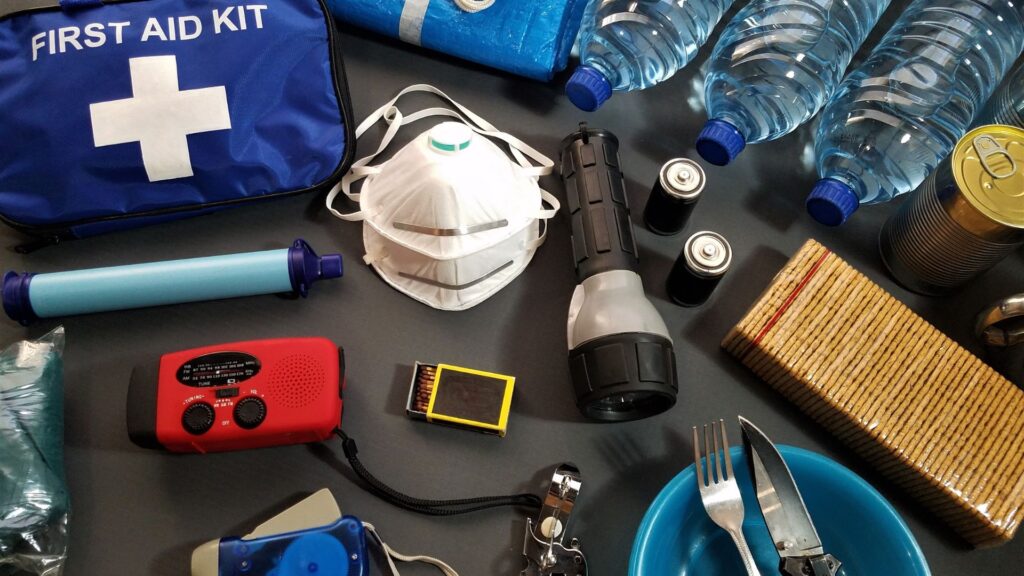IN THIS BLOG
- Myth #1: The symptoms of a venomous bite can slow down by sucking or applying ice to the wound
- Myth#2: Breathing into a paper bag can help calm hyperventilation
- Myth #3: You can safely remove a tick by burning it off with a lighter
- Myth #4: Induced vomiting can rid poison from the human body
- Myth #5: Always ensure a person with a concussion stays awake, otherwise they could die
- Myth #6: Do not call 9-1-1 if a person is only experiencing minor conditions rather than a full heart attack
- Myth #7: Tilt your head back to stop a nosebleed
- Myth #8: Upper body strength is crucial when performing CPR
- Myth #9: CPR can instantly wake someone up
- Myth#10: Remove an impaled object immediately
- Register for Standard First Aid and CPR training
IN THIS BLOG
- Myth #1: The symptoms of a venomous bite can slow down by sucking or applying ice to the wound
- Myth#2: Breathing into a paper bag can help calm hyperventilation
- Myth #3: You can safely remove a tick by burning it off with a lighter
- Myth #4: Induced vomiting can rid poison from the human body
- Myth #5: Always ensure a person with a concussion stays awake, otherwise they could die
- Myth #6: Do not call 9-1-1 if a person is only experiencing minor conditions rather than a full heart attack
- Myth #7: Tilt your head back to stop a nosebleed
- Myth #8: Upper body strength is crucial when performing CPR
- Myth #9: CPR can instantly wake someone up
- Myth#10: Remove an impaled object immediately
- Register for Standard First Aid and CPR training
As medicine advances, several outdated medical practices continue to circulate. Your favourite TV shows and movies also display false and unsafe methodology, such as using a paper bag to help control hyperventilation, or showing a character come back from the dead after a couple chest compressions. Viewers are often exposed to CPR and AED use through the screen, but are never taught how to properly perform them. Whether it is outdated information or emerging misconceptions for entertainment purposes, you have probably fallen for one of these myths. So, here are 10 common first aid myths and how to go about certain scenarios instead.
Myth #1: The symptoms of a venomous bite can slow down by sucking or by applying ice to the wound
Snake bites
In Canada, a large majority of snakes are non-venomous. However, there are 3 venomous rattlesnakes to be aware of, Northern Pacific Rattlesnakes, Massasauga Rattlesnakes, and Prairie Rattlesnakes.
Prevention
To prevent snake bites, be aware of your surroundings and wear proper footwear when hiking. If you hear or spot a rattlesnake, it is crucial to slowly back away to ensure the snake is not startled or aggravated.
Action
If you happen to get bitten by a venomous snake, notify emergency medical services and call 9-1-1. Be sure to take note of the snake’s appearance to help medical responders choose the best treatment. Keep the victim still and calm to help slow the venom from spreading, wash the wound with water, and cover the bite with a clean, dry cloth.

Spider bites
Similar to snakes, most spider bites in Canada are harmless, but there are 2 life-threatening venomous spiders to be aware of, the brown recluse and the black widow.
Action
If you suspect someone is bit by one of the 2 venomous spiders, seek medical attention immediately. Instead of sucking or applying ice on the wound, which is both ineffective and painful, wash the area with water, and apply a cold, dry cloth to the wound.
Myth #2: Breathing into a paper bag can help calm hyperventilation
Hyperventilation can occur from asthma, panic attacks, or anxiety. To help prevent hyperventilation, learn about what triggers these attacks and avoid them.
Breathing into a paper bag has been widely known to help calm someone hyperventilating by restoring lost carbon dioxide into the body. However, this practice is extremely unsafe, and there are better methods to help regulate breathing, such as encouraging the person to take slow, controlled, and deep breaths.

Inquire about First Aid Training
Now that you know the myths, let’s get registered for a First Aid & CPR training course! Learn more about life-saving skills and register today. Contact us today!
Myth #3: You can safely remove a tick by burning it off with a lighter
Burning a tick off with a lighter is both dangerous and ineffective. This method is unreliable as the tick must detach itself, but it could also create a sense of danger for the tick, increasing the likelihood of exposure to diseases like Lyme disease. The best course of action for removing a tick is to use a pair of tweezers, grasp the tick’s head (the area closest to the person’s skin), and pull upwards in a slow and controlled manner until the tick releases.
Myth #4: Induced vomiting can rid poison from the human body
Do not induce vomiting to rid poisons like bleach, unless directly instructed to do so by a medical professional. Any harmful toxins can cause a variety of damages when swallowed and throwing up those same toxins can cause even more damage as it travels back up the body.
Symptoms of poison consumption may include issues with breathing, irritation, dizziness, seizures, and a blue hue around the mouth.
Myth #5: Always ensure a person with a concussion stays awake, otherwise they could die
Typically, it is safe for a person with a concussion to fall asleep. Some healthcare workers may recommend waking that person up from time to time to ensure that their symptoms have not intensified.
Myth #6: Do not call 9-1-1 if a person is only experiencing minor conditions rather than a full heart attack
Several people do not call 9-1-1 when they are experiencing minor conditions such as heartburn, indigestion, or muscle strain because they are symptoms that are likely to go away. However, heart attacks are more severe and require immediate attention, otherwise, they can be fatal. So, if you have any reason to suspect an oncoming heart attack, call 9-1-1 and seek medical care.
Myth #7: Tilt your head back to stop a nosebleed
Tilting your head back during nosebleeds is an extremely common practice that should not continue. It may cause blood to go down the throat and cause choking, stomach irritations, or vomiting. The best way to deal with a nosebleed is to sit straight and lean slightly forward to drain the blood from the nose. Then, firmly pinch the soft part of your nose for 10-15 minutes or until the bleeding is controlled.

Myth #8: Upper body strength is crucial when performing CPR
When it comes to CPR, proper technique and form are what’s important. Compressions come from your core and the weight of your upper body rather than your muscles. Endurance plays a more important role than strength, so steer clear of rocking back and forth and exuding excess energy to avoid your arms and shoulders from tiring quickly.
Myth #9: CPR can instantly wake someone up
Although CPR is a lifesaving procedure, unlike in the movies, its goal and function is not to instantly wake someone up. CPR helps increase the survival rate for cardiac arrest victims by restoring blood flow to critical organs.

Myth #10: Remove an impaled object immediately
Removing an impaled object can cause more harm than good. The object puts internal pressure on a wound, thus helping control the bleeding internally. If it is removed, the patient is at risk of continuous bleeding that cannot be controlled from the outside. So, instead of removing the object, apply gauze to the area and place clean cloths around it.
Register for Standard First Aid and CPR training
Now that we have tackled these 10 first aid myths and practices to do instead, find your nearest Coast2Coast location and register for Standard First Aid and CPR training. That way, the next time you encounter one of these situations, you can stay calm, know exactly what to do, and help save a life.



















